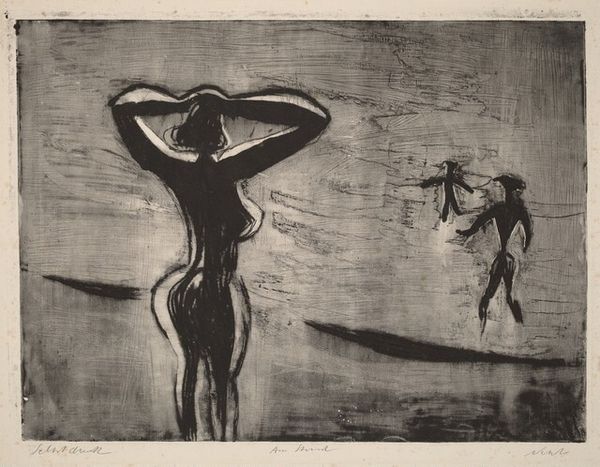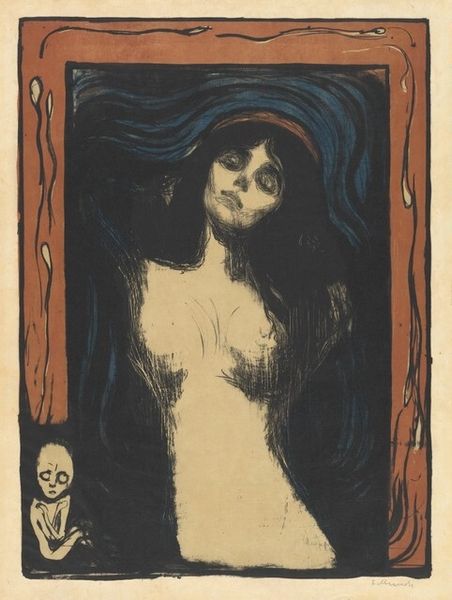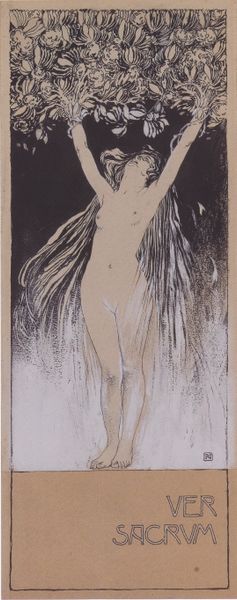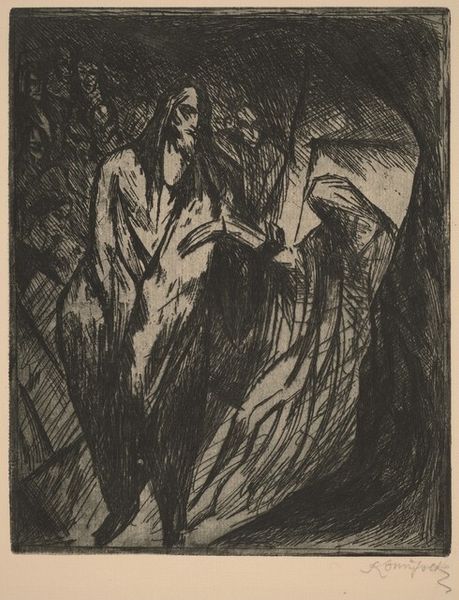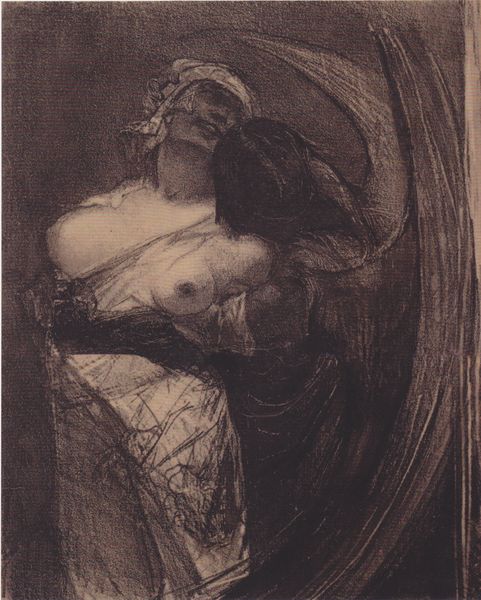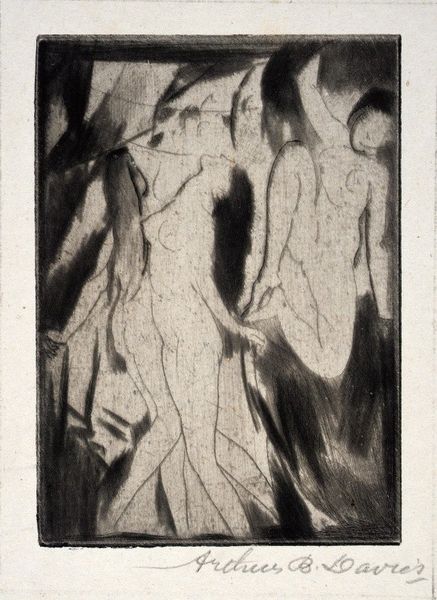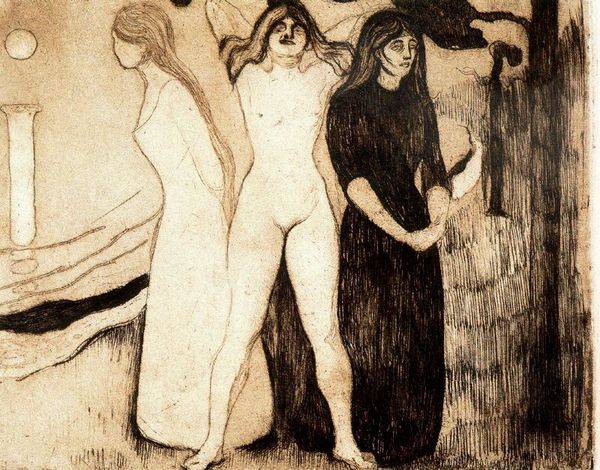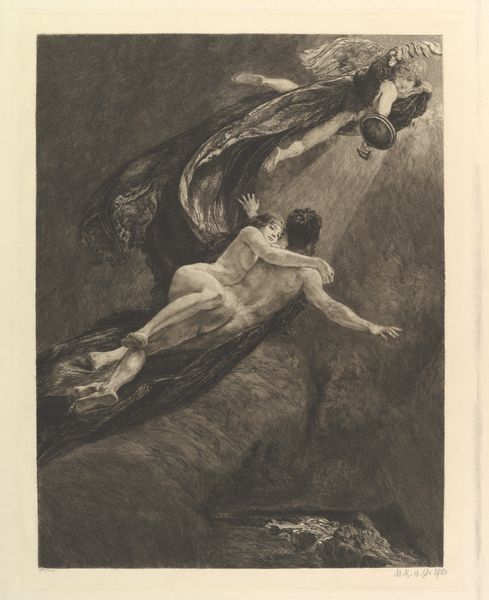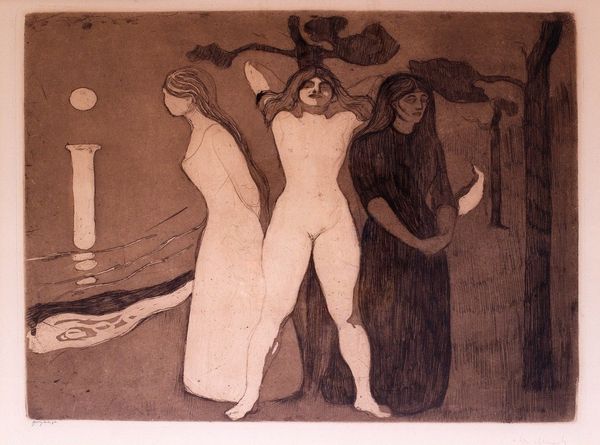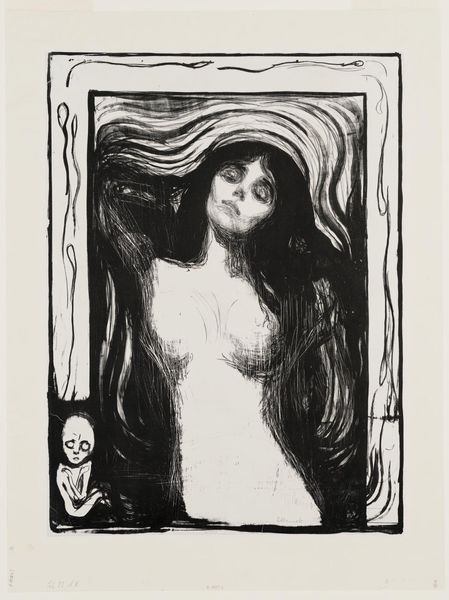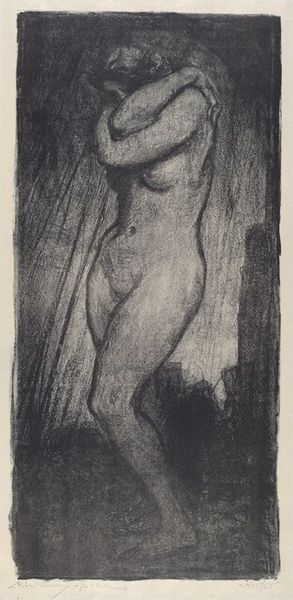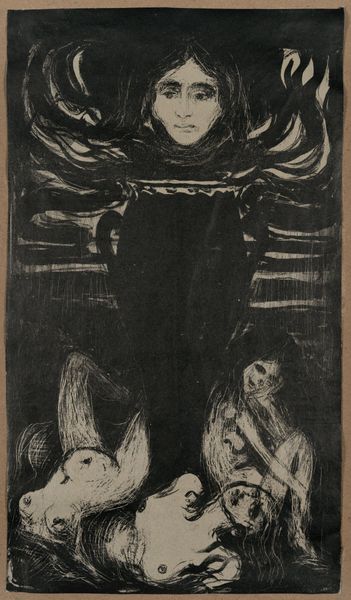
Copyright: Public Domain: Artvee
Editor: This is Edvard Munch's "The Sphynx Woman in Three Stages," a charcoal drawing from 1980. The composition, with these three distinct figures, is really striking. There's a real tension in the figures’ poses, making it rather unsettling. What do you make of the artist's choices here? Curator: Munch’s revisiting of feminine archetypes, through the lens of Symbolism and Expressionism, offers fertile ground for inquiry. Look closely; these "stages" invite us to consider societal pressures on women. The stark charcoal emphasizes the darkness, literally and metaphorically. How do these figures intersect with conversations around female representation and agency? Editor: I see how each stage might represent a different point in a woman's life, maybe innocence, sexuality, and then… something else? But how does the artist’s own context play into this? Curator: Precisely! Munch's personal relationships and anxieties are inseparable from his work. The late date, 1980, is key – a moment of intense re-examination in art. It positions the work within the development of Neo-expressionism, and invites comparisons between his earlier symbolist concerns and the contemporary context, echoing debates around identity. Could you suggest any historical touchpoints which can illuminate this drawing? Editor: Well, with that in mind, I start to wonder about his relationship with his models, who the women in his life were, and how that affected his viewpoint, maybe through a biographical lens... Curator: Yes, by interrogating those complexities, we unveil the layered meanings behind Munch's symbolic figures and gain a fuller view of this striking artwork and a deeper comprehension of gender representation during that time. Editor: I hadn’t really considered the influence of both historical views and autobiographical details when I first saw this, but now it definitely opens new doors to understanding the artist’s perspective.
Comments
No comments
Be the first to comment and join the conversation on the ultimate creative platform.


